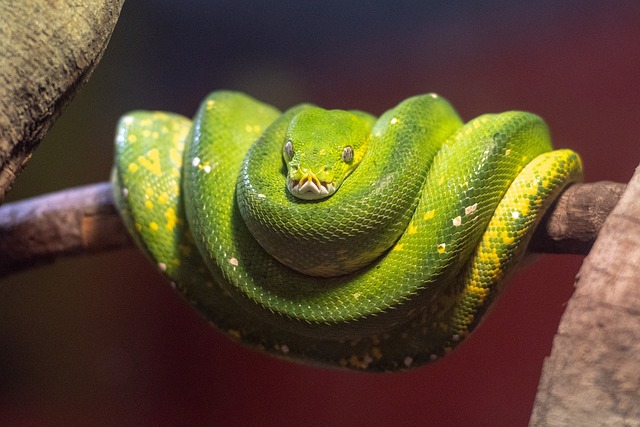When you hear the word “Python,” your mind may instinctively jump to the world of programming and software development. However, there is another python that predates the digital age and captivates the imagination with its luscious beauty and charming behavior – the python snake.
Python snake in the forest:
Pythons are a group of non-venomous constrictor snakes found in various parts of the world. One of the largest snake species, the reticulated python, can reach a length of over 20 feet. Pythons are known for their impressive size, powerful bodies and attractive patterns. These creatures can be found in a variety of habitats from rainforests to grasslands, demonstrating their adaptability and resilience.
Physical Characteristics:
The python snake can be easily identified by its fleshy build and distinctive patterned skin. Unlike venomous snakes, which use venom to subdue their prey, pythons rely on their powerful bodies to pin down and overpower their prey. For example, the reticulated python has a smooth, elongated body covered with complex patterns of light and dark scales, providing effective camouflage in its natural environment.
Hunting and food:
Pythons are ambush predators, patiently waiting for the right moment to attack. They have the incredible ability to spread their jaws to swallow prey whole, and their loose jaws allow them to eat animals much larger than their heads. Pythons eat a wide variety of animals, including mammals, birds, and reptiles. Once they catch their prey, they use their muscular body to wrap it around and squeeze the life out of it.
Reproduction:
Python reproduction is an interesting aspect of their biology. Female pythons are known for their commitment to maternal care. They usually lay a clutch of eggs in a secluded area, and then coil around them to provide protection. The mother remains vigilant, guarding the eggs until they hatch. Once the eggs hatch, female pythons may remain with their offspring for some time, offering a rare display of parental care in the reptile world.
Human-animal conflict:
While pythons play an important role in maintaining the balance of ecosystems by controlling populations of prey species, their interactions with humans can sometimes lead to conflict. Encounters with humans, especially in densely populated areas, may result from efforts to remove snakes or, unfortunately, may lead to incidents where the python is deemed a threat.
Conservation Challenges:
Many python species face conservation challenges due to habitat loss, hunting, and the exotic pet trade. For example, the Burmese python has become an invasive species in Florida, where it threatens native wildlife. Conservation efforts are underway to address these issues and protect python populations in their natural habitats.
The python snake, with its attractive physical features and interesting behavior, reminds us of the diverse and fascinating world of wildlife. While the programming language Python has undoubtedly left its mark on the digital landscape, the snake that inspired its name remains a symbol of the wonders of the natural world. Understanding and appreciating the python snake contributes to a broader conversation about biodiversity, conservation, and the delicate balance that exists between humans and the creatures with which we share the planet.
Python snake facts
- species diversity: There are more than 40 recognized species of pythons, and they belong to the Pythonidae family. Some of the well-known species include the Burmese python, reticulated python, ball python, and green tree python.
- Impressive Size: Pythons are among the largest snake species in the world. Notably, the reticulated python holds the record as the longest snake, reaching over 20 feet in length. Burmese pythons are also known for their large size.
- Habitat range: Pythons are found in a wide variety of habitats in Africa, Asia, and Australia. They can thrive in diverse environments including rainforests, grasslands, savannas and even semi-arid areas.
- Camouflage Masters: Python skin is decorated with many colors and patterns that serve as effective camouflage in their natural habitat. This allows them to blend seamlessly into their surroundings, making it easier to ambush prey and escape from predators.
- Constrictor Behavior: Pythons are constrictor snakes, meaning they subdue their prey by wrapping themselves around it and squeezing tightly. The powerful contraction cuts off blood flow and prevents the prey from breathing, ultimately leading to death.
- Unique jaw structure: Pythons have a unique jaw structure that allows them to open their mouths incredibly wide. Their jaws are attached by stretchable ligaments, enabling them to swallow prey whole, even if it is larger than their head.
- Night Habits: Most python species are nocturnal, preferring to hunt and be active at night. Their excellent heat-sensing pits help them locate warm-blooded prey in the dark.
- Egg Laying Reproduction: Female pythons are oviparous, meaning they lay eggs rather than give birth to live babies. After laying a clutch of eggs, the female coils around them for protection and incubation. Temperature during incubation determines the sex of the eggs.
- Slow metabolism: Pythons have a slow metabolism compared to other snakes. They may also go weeks or months between meals, depending on the size of their last meal. This ability to survive on minimal food is an adaptation to their unexpected hunting success in the wild.
- Thermoregulation Techniques: Pythons are ectothermic, relying on external sources of heat to regulate their body temperature. They bask in the sun to warm up and move to shady areas or water to cool off. This behavior helps them maintain an optimal temperature for digestion and overall activity.
- long life span: In captivity, pythons can have a long lifespan, with some individuals living more than 20 years. Proper care, suitable environment and balanced diet contribute to their longevity in captivity.
- Conservation Challenges: Many python species face threats due to habitat loss, hunting for their skins, and the exotic pet trade. The introduction of invasive species such as the Burmese python into Florida has also raised conservation concerns in some areas.




Comments
Post a Comment